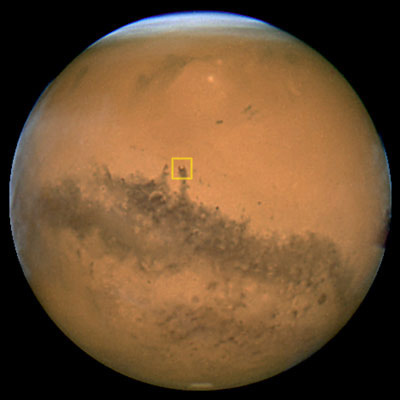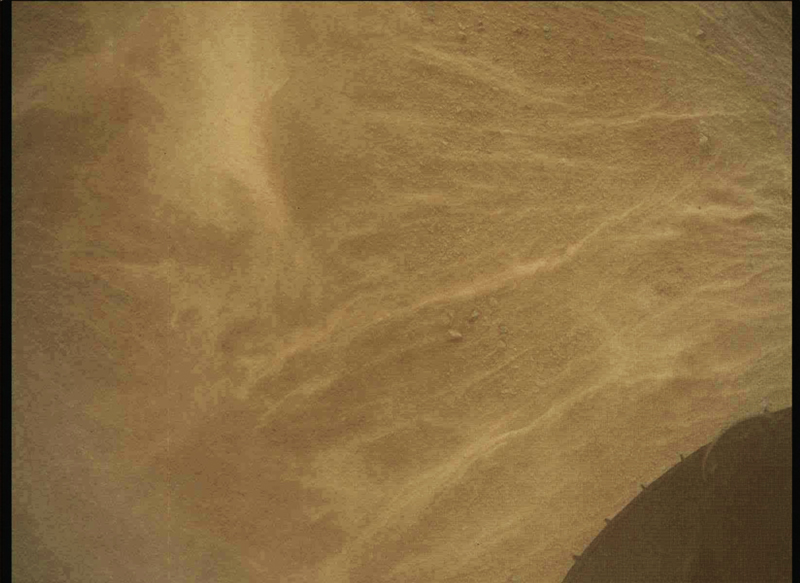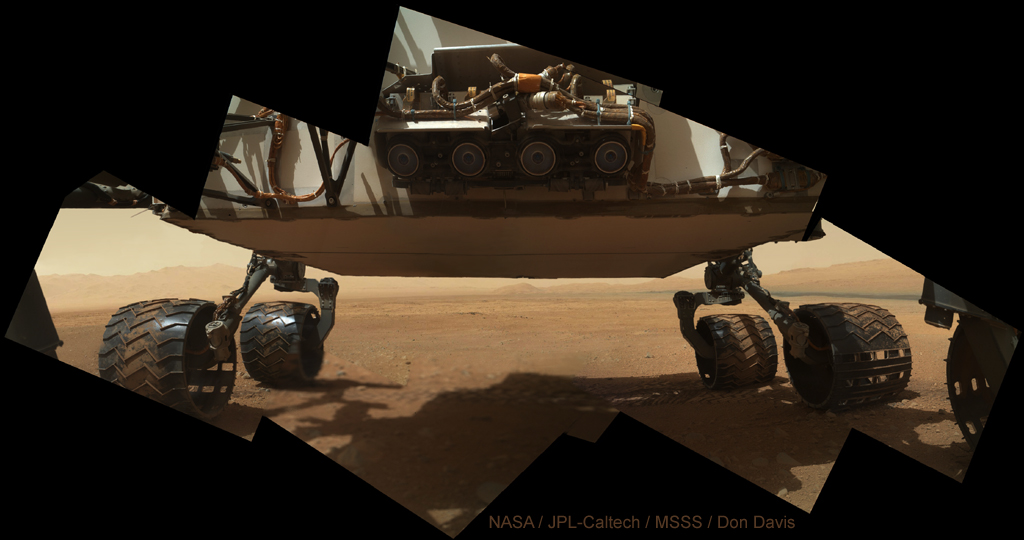Gale crater is where 'Curiosity' touched down
on August 5, 2012, a 96 mile, 154 km wide prominent crater. This
crater ended up at the very shoreline of a vast ancient depression
which probably saw water and ice filling the lower Northern floor.
An especially high central peak looms 3.4 miles. or 5.5 km above
the crater bottom
Gale is intriguing as its effects on the local dust distribution
can be seen and photographed through Earth telescopes. The higher
Southern crater floor is covered with dark sand dunes, which almost
encircle the central peak in a crescent shaped mass. Similar dunes
extend far southward in a bold line nearly 100 miles by several
hundred miles. This is a good resolution target for telescope
users, if it can be detected you have a high resolution view by
terrestrial standards.

Left: A Hubble Space Telescope view of Mars, showing Gale Crater outlined, with its huge dark dune field extending southwards.
Above right: Gale crater from the Northwest, showing its dark interior dune fields almost encircling its prominent central peak. (NASA/JPL)
Below: a closer view of the landing site, showing the dark dunes between the landing site and 'Mt Sharp', with a proposed traverse route mapped out in turquoise. (NASA/JPL)

This landing was the most thoroughly researched, simulated and documented in history.

Left: The Mars Reconnaissance Orbiter obtained this snapshot of the MSL rover being slowed by its parachute.
Below: This color view, modestly readjusted, shows the dark dune fields that would appear along the northern horizon in the first surface views from the rover. The aeroshell which protected the rover during atmospheric entry falls away in this cropped frame of the MARs Descent Imager, (MARDI) landing sequence, in which 4 high quality frames per second were obtained during the descent.
Below: In the last moments of the descent fine dust was picked
up by the rockets, carried along in odd patterns as it was buffeted
about in the near vacuum.
Soon we saw the surroundings, with the dark dunes between us and Mt. Sharp looming far above the horizon.
Below: Never before has a more capable rocver been to Mars. it has several color cameras, including one on its extendible arm, the 'MArs Hand Lens Imager' or MAHLI which obtained a rover 'self portrait' which is shown here in part, and slightly recolored..
Below: This look at the underside of the MSL rover was also obtained with the MAHLI. Some portions of the distant background were addded frpm other panoramas .

Below: A look at the complex terrain awaiting close inspection in the years ahead. Happily the most sophisticated rover ever sent to Mars is now at the most varied and dramatic landing site ever visited!
Color balanced to suggest likely natural surface colors.